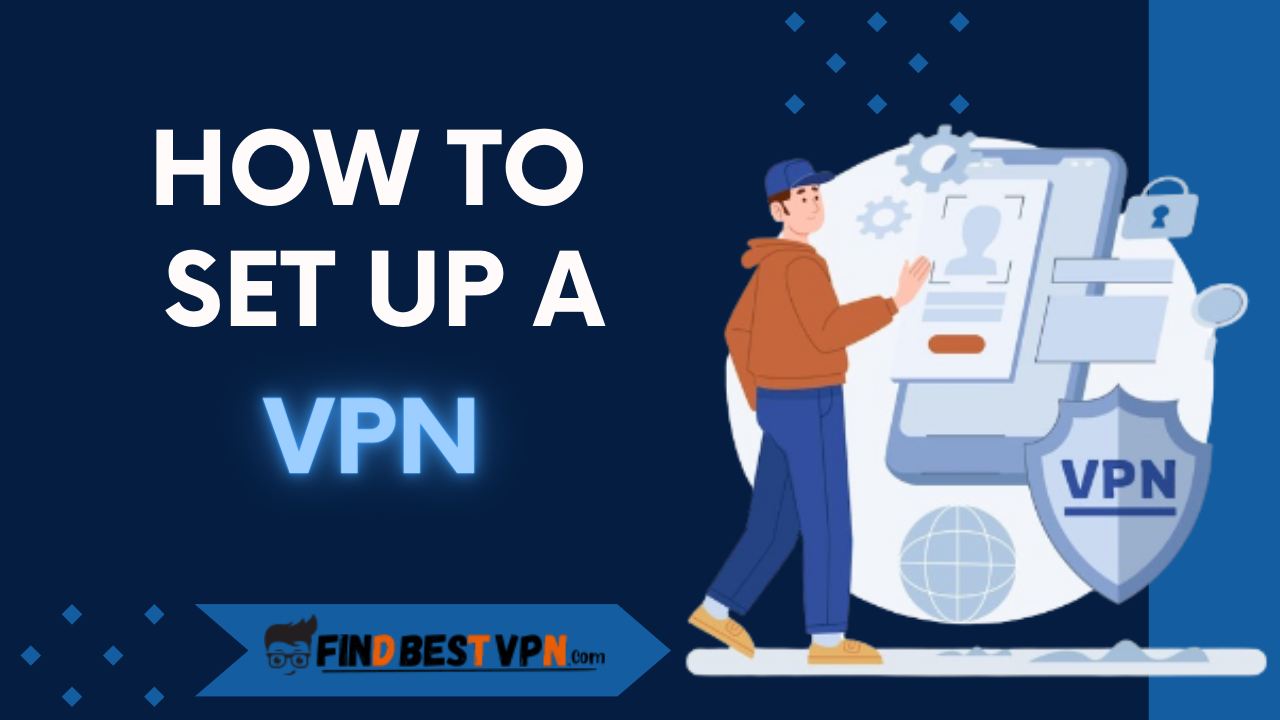
How To Set Up A VPN: A Step-by-Step Guide
Maintaining online privacy is a priority step to secure data in today’s era. One reliable way to do this is to set up a Virtual Private Network (VPN). A VPN ensures your internet activities are secure and private, masks your IP address, and encrypts data transfers.
But how does one go about setting up a VPN? This article provides detailed step-by-step instructions on how to set up a VPN.
Why To Set Up A VPN?
Firstly, setting up a VPN at home provides better online privacy. When you browse the internet without a VPN, your data travels via servers and may reach malignant third parties, such as hackers or your Internet Service Provider (ISP).
A VPN establishes a private tunnel for your records, encrypting it and making it challenging for others to intercept or view.
Secondly, a VPN allows you to get access to geo-restrained content. Have you ever tried to watch a show on a streaming service only to discover it’s no longer available in the United States of America? A VPN can clear up this trouble.
Protecting your IP deal and making it seem like you’re browsing from a distinctive location could bypass these geographic regulations.
Important Steps On How To Set Up A VPN On Windows
A VPN can help prevent bandwidth throttling. ISPs, like streaming or gaming, occasionally lower your net speed if they hit upon heavy utilization. Since a VPN hides your online pastime from your ISP, it could help maintain a consistently speedy internet connection.
Following are the steps which one should follow to set up a VPN on windows:
Step 1: Select The VPN Service
The first step regarding setting up a VPN is to choose a VPN provider. Several services are available, each with features, pricing and security levels. Some of the beneficial options to maintain online privacy include NordVPN, ExpressVPN, and CyberGhost.
Research and understand what each provider offers and choose the one that fits your needs and budget.
Step 2: Register And Purchase A Plan
Once you have selected a VPN provider, visit their website to sign up. In most cases, you must provide an email address and payment information. Most VPNs offer subscription plans – monthly, annually, or even long-term. Choose the plan that best suits your needs.
Step 3: Install VPN Client
The next step regarding how to set up a VPN at home is that once you purchase the system, download the VPN client software. This is usually obtained directly from the VPN provider’s website. Ensure you download the right one for your operating system (Windows, Mac, iOS, Android). Once downloaded, install the software.
Step 4: Fill Credentials
Once installed, open the VPN client. You will be asked to use the credentials you created during registration. Once logged in, you may be asked to select a VPN server location.
Choose the location that suits your needs – for example, if you want access to the content only available in the United States, choose a server located there. If you have the question how to set up a VPN on a Mac, follow the same steps.
Step 5: Connect To The VPN Now
Now that everything is set up, it is time to connect with your VPN. There needs to be a ‘Connect’ button on the interface of the VPN. Click that.
Step 6: Verify Your Connection
To make sure your VPN is working successfully, verify your IP address. You can do that by way of touring a website like this. Regarding how to set up a VPN on Android, if the VPN is hooked up properly, the IP address displayed should be related to the VPN server you selected, not your actual IP address.
Step 7: Enjoy Your Private Browsing
Remember to disconnect from the VPN while you’re surfing or while you do not want it. Setting up a VPN may additionally appear daunting; however, following those steps will become a trustworthy method.
How To Set Up A VPN On Mac?
Following are the steps through which we can set up a VPN on Mac:
- Go to System Preferences by clicking the Apple icon on the top left of your screen.
- Select Network.
- To add a new network connection, click the plus sign.
- Choose VPN from the Interface menu, and then choose a VPN protocol, likely, L2PT over IPSec from the Service Name menu. Fill out the Service Name form with the name you like, and then hit the Create button.
- Click on Authentication Settings after entering the Server Address and Account Name.
- After you’ve entered the shared secret and password, hit the OK button.
- After you’ve clicked Apply, click Connect.
- You can now connect to your VPN. When you’re finished, click Disconnect to disconnect from your VPN.
How To Set Up A VPN On An iPhone?
To manually enable a VPN on your iPhone, follow these steps:
- Select the “Settings” app from your iPhone’s Home Screen.
- Pick “General.”
- Select “VPN.”
- Hit the “Add VPN Configuration” button.
- Click “Type” and then select the VPN protocol you want to use. Possible options include L2TP, IPSec, or IKEv2.
- Choose a VPN server, enter a description, and then enter the remote ID.
- Please enter your login credentials.
- Select “Manual” or “Auto” to activate your proxy server, if you’re using one.
- Click on “Done.”
How To Set Up A VPN On Android?
Here are some steps:
- Select Wireless & networks or Wi-Fi & Internet. Navigate to the page where you can change your network settings.
- Press on Virtual Private Network. You might have to hit More on some devices to see all the options.
- Press the + sign located in the upper right corner. If you can’t find one, go to the settings menu.
- Put in the required details, such as the server’s address, login, and password. You will receive this information from the network administrator.
How To Set Up A VPN On Linux?
Once you have all the necessary components, there are several methods to configure a VPN on a Linux device:
- Set up a virtual private network
- Setting up the OpenVPN programme
- Integrating OpenVPN into the Network Manager
Conclusion: How To Set Up A VPN
A VPN is a vital tool in maintaining your online privacy and safety. So, take control of your digital lifestyle and set up a VPN. Remember, though, that even as a VPN improves your online protection, it does not assure complete anonymity. Always practice correct online safety.
Security level provided with a VPN largely depends on the company. Therefore, it is crucial to select a reputable provider. As with the maximum things in existence, you frequently get what you pay for in relation to VPNs.
Ultimately, setting up a VPN is a simple yet powerful way to increase your online safety. By following these steps, you may be opting for safer internet access.



















